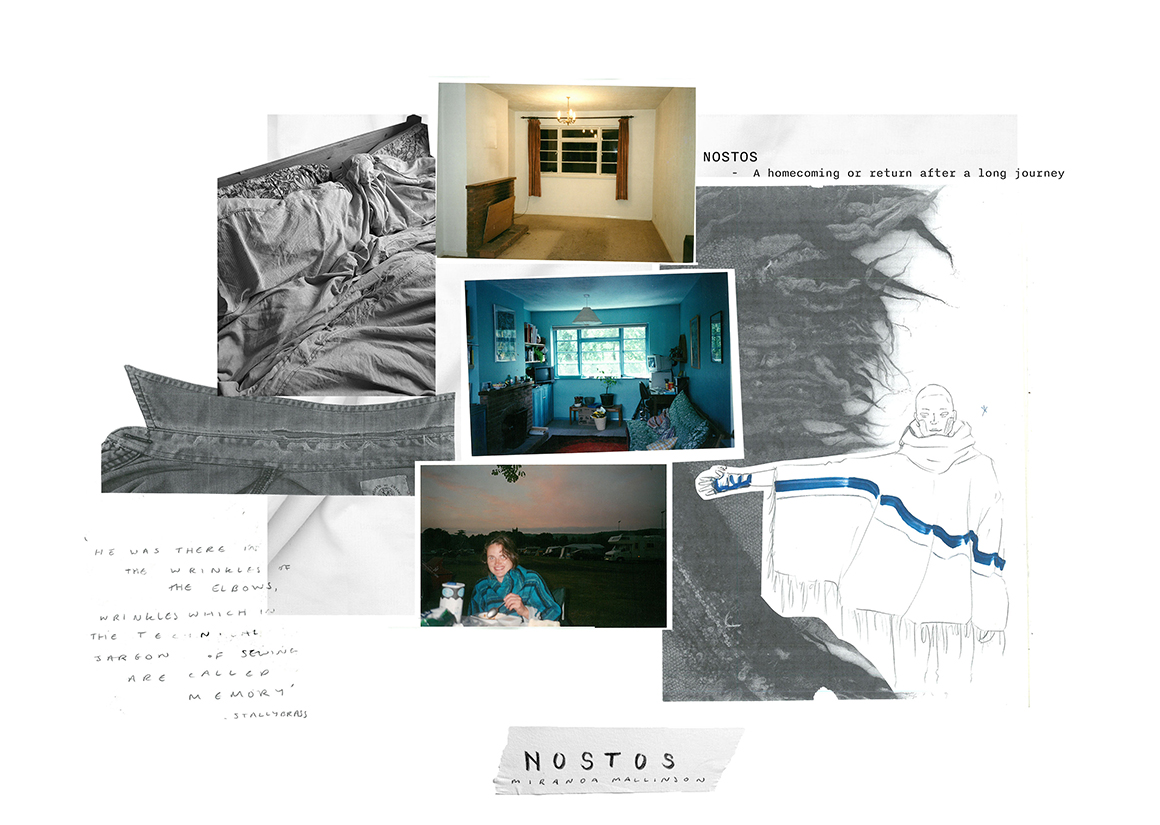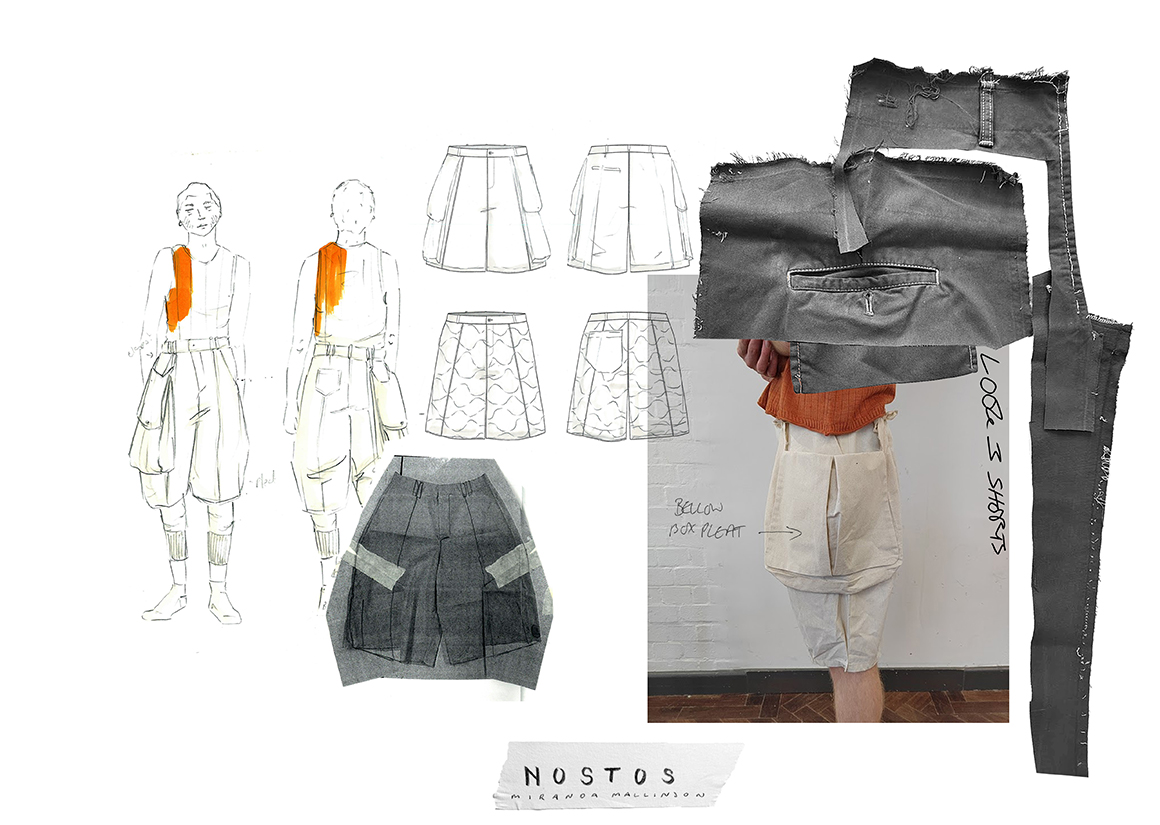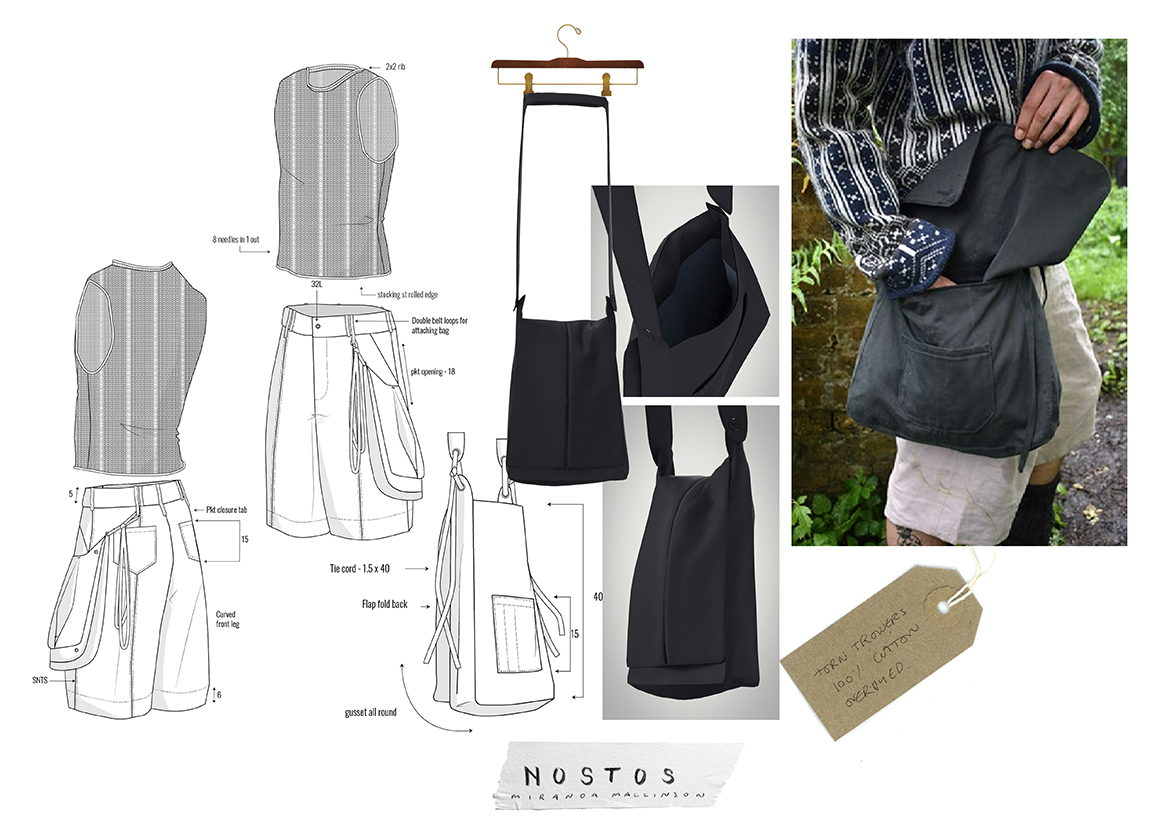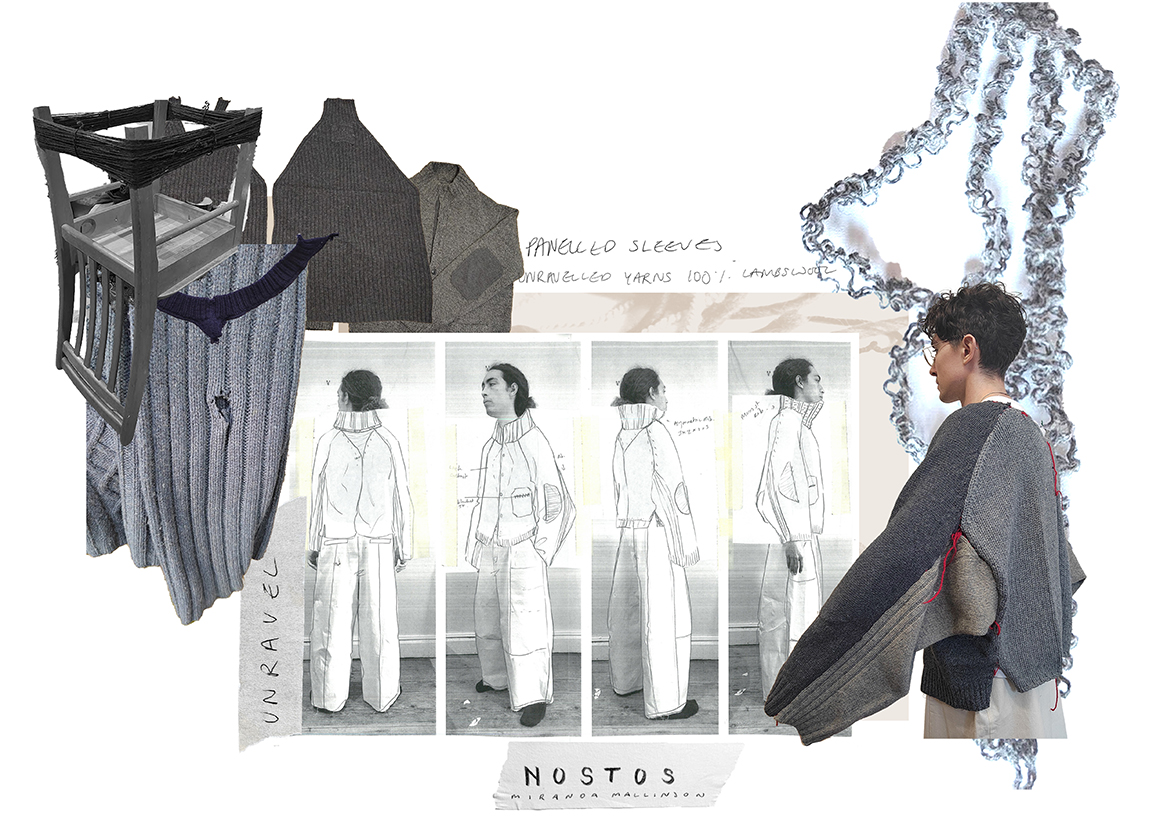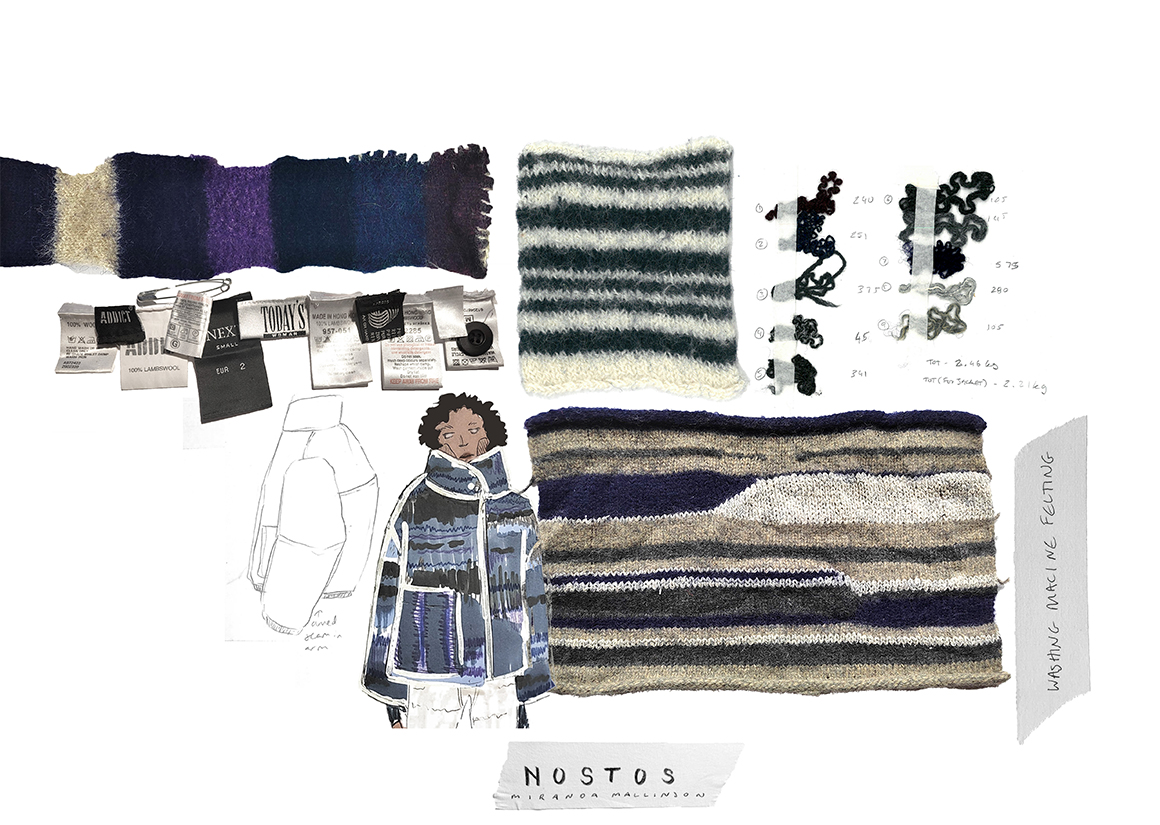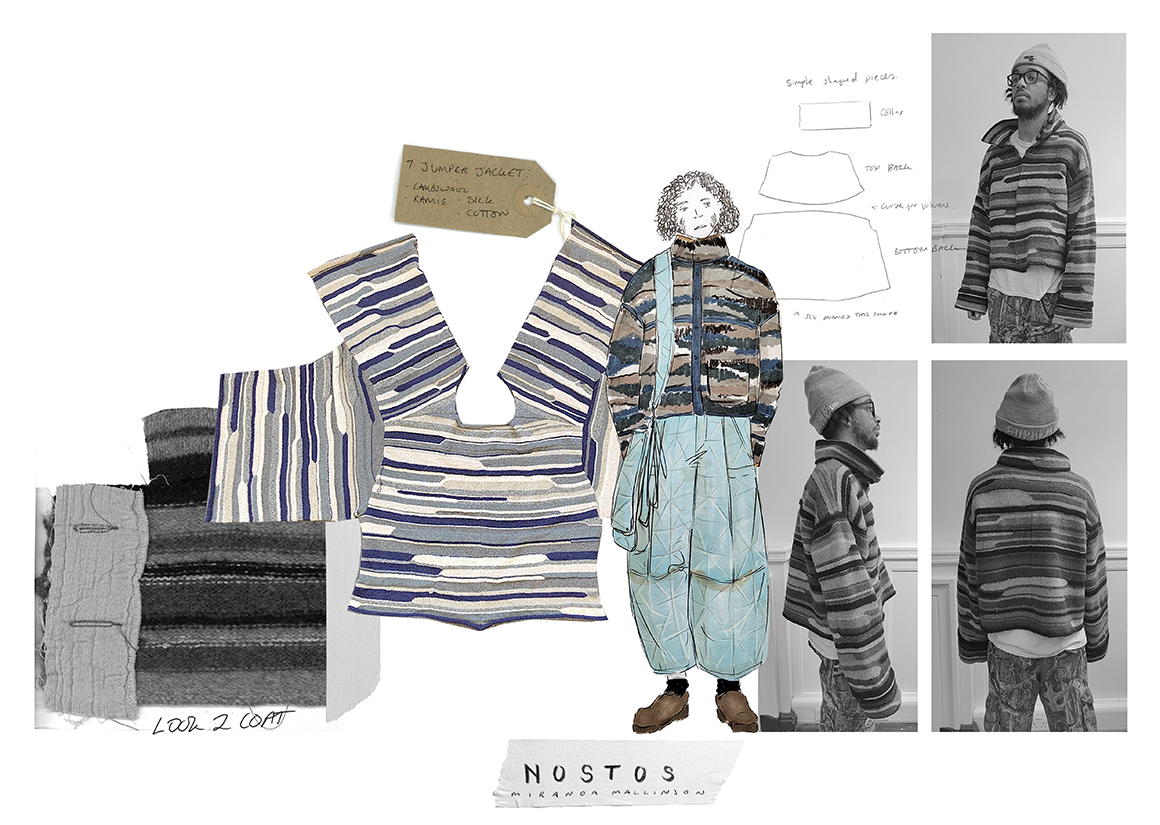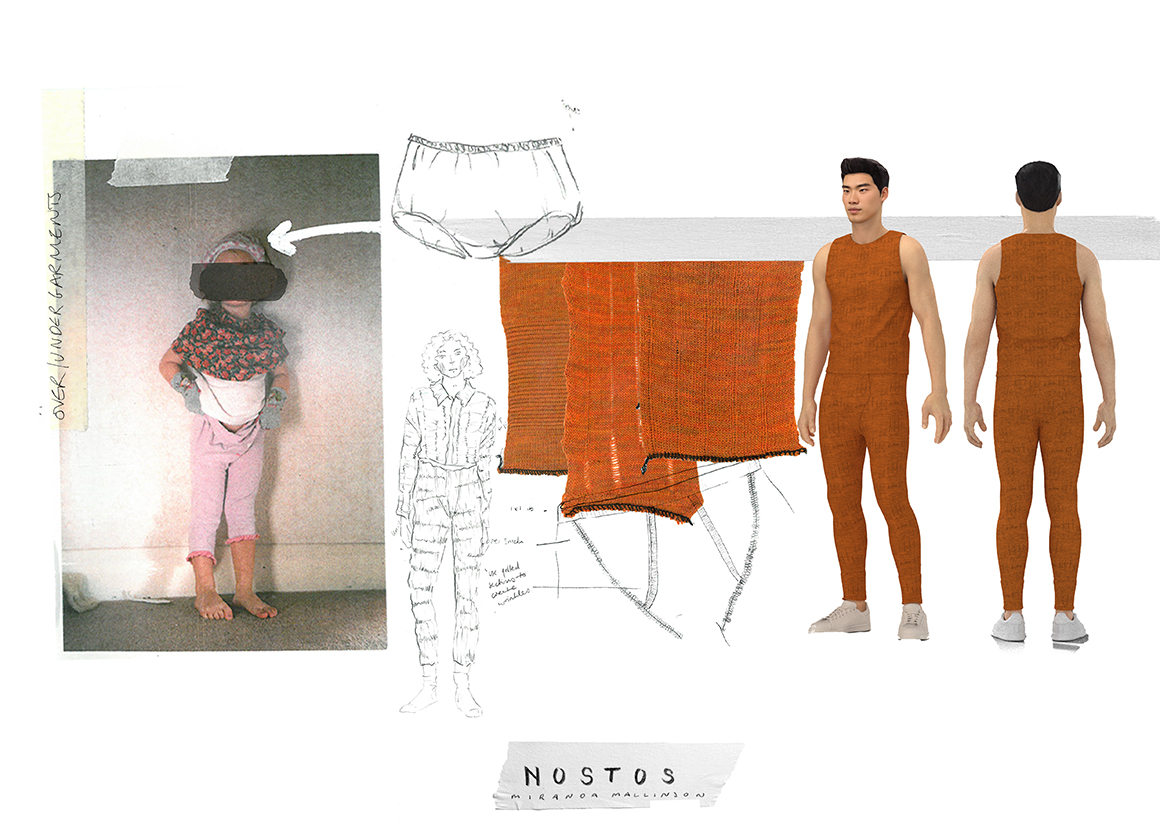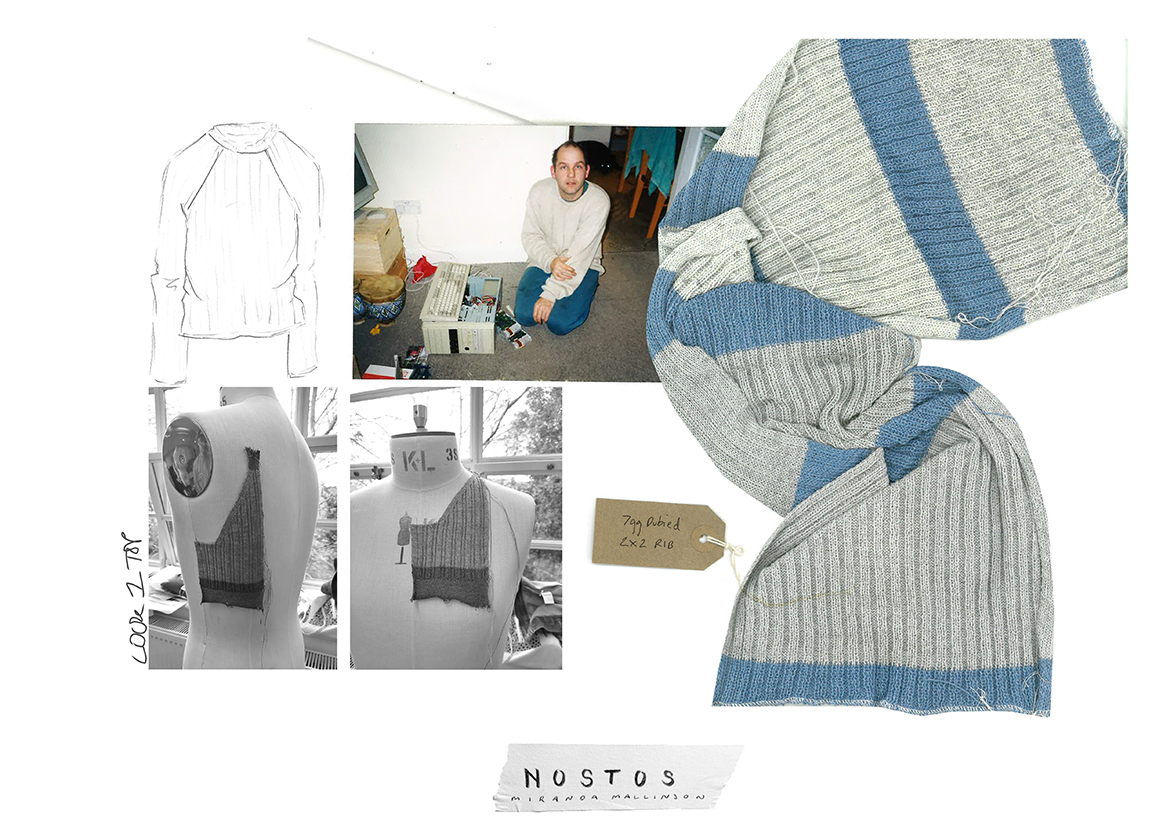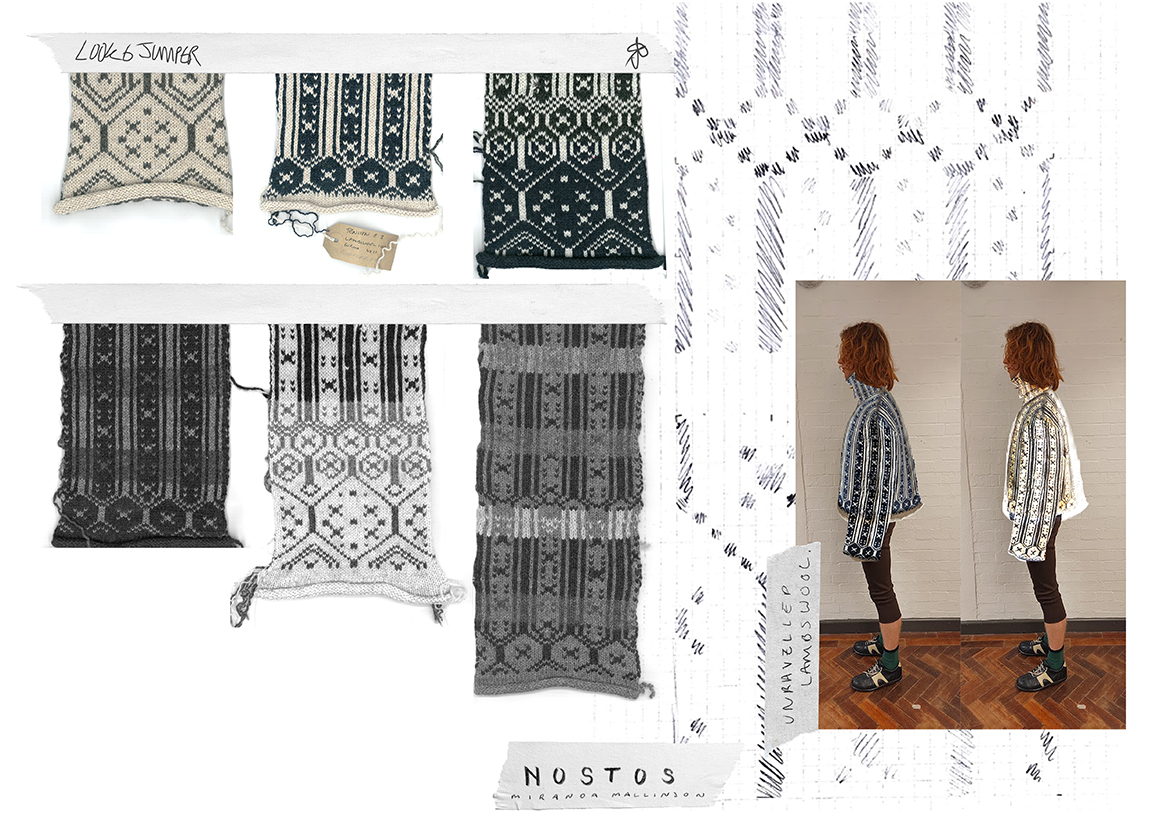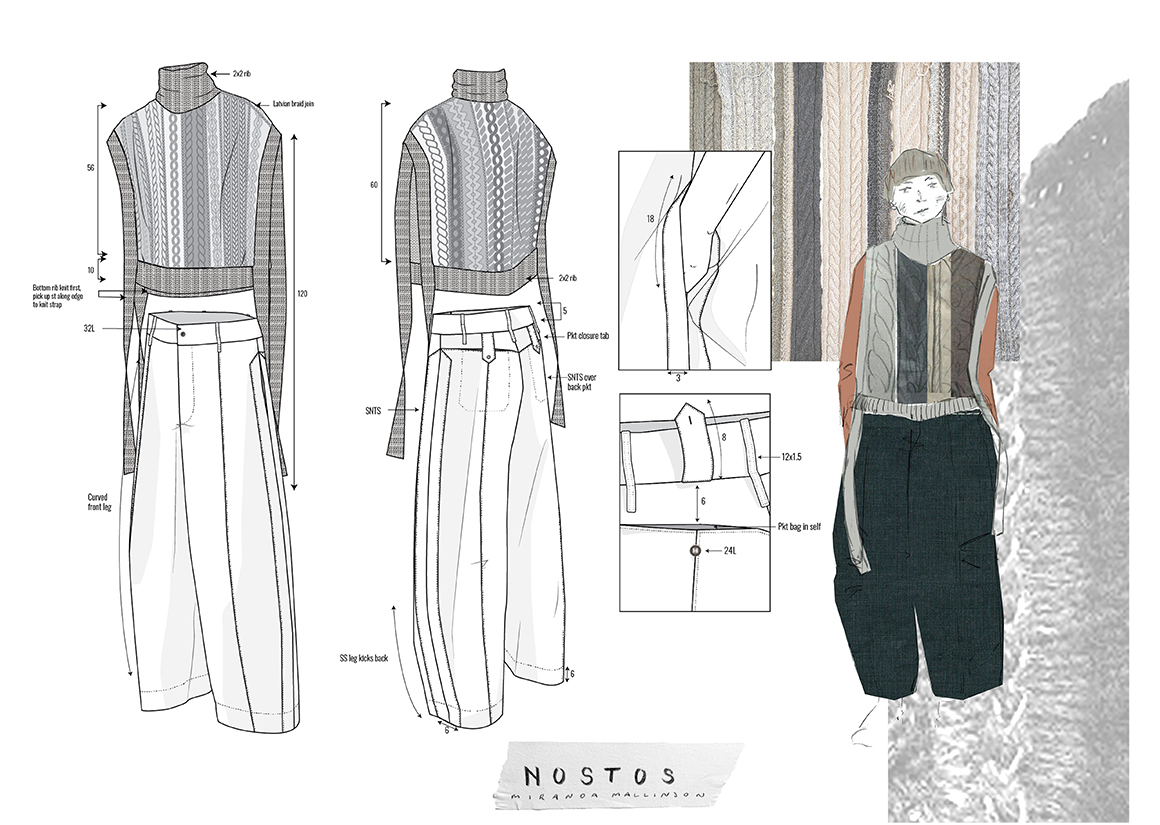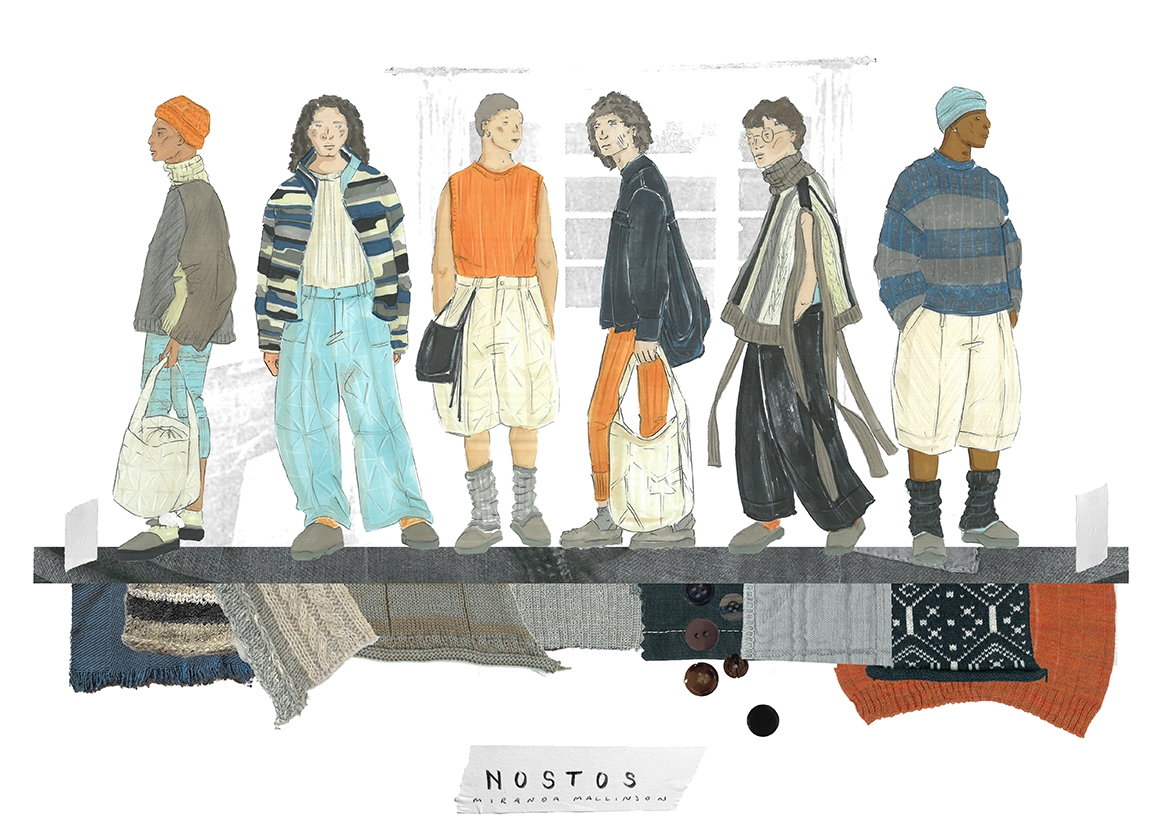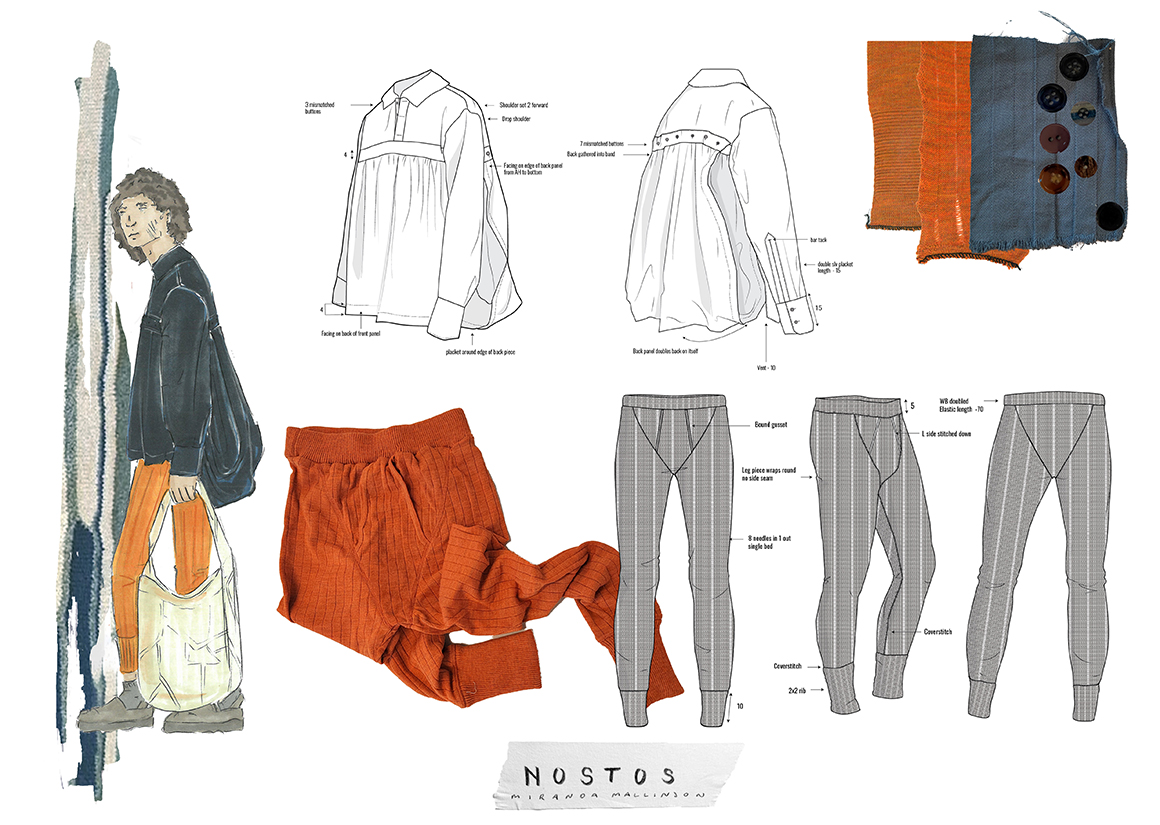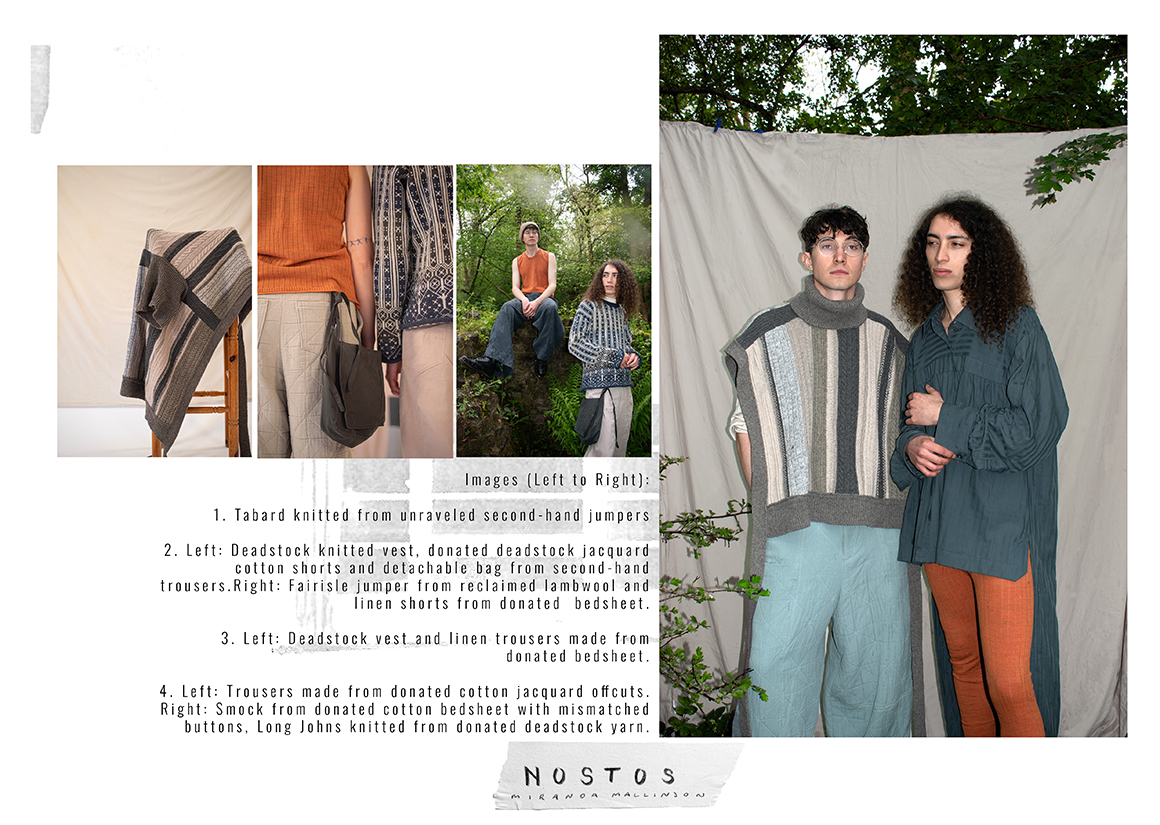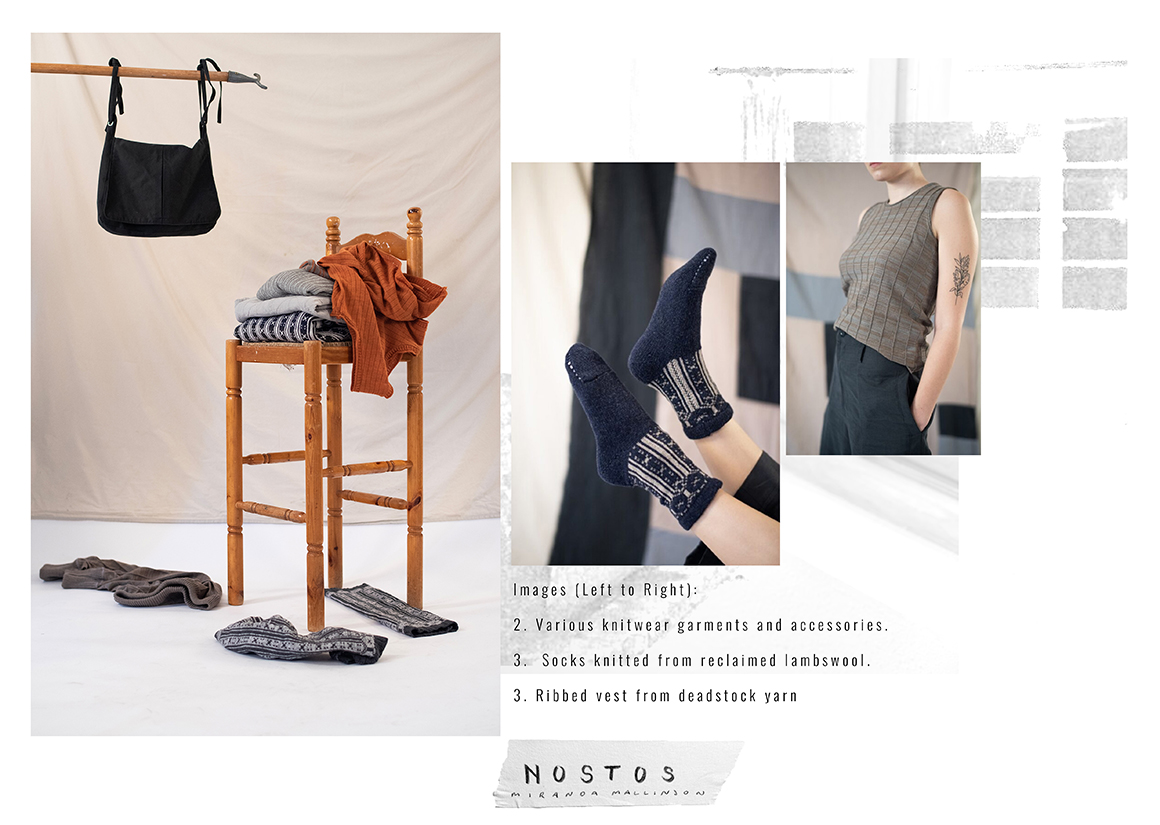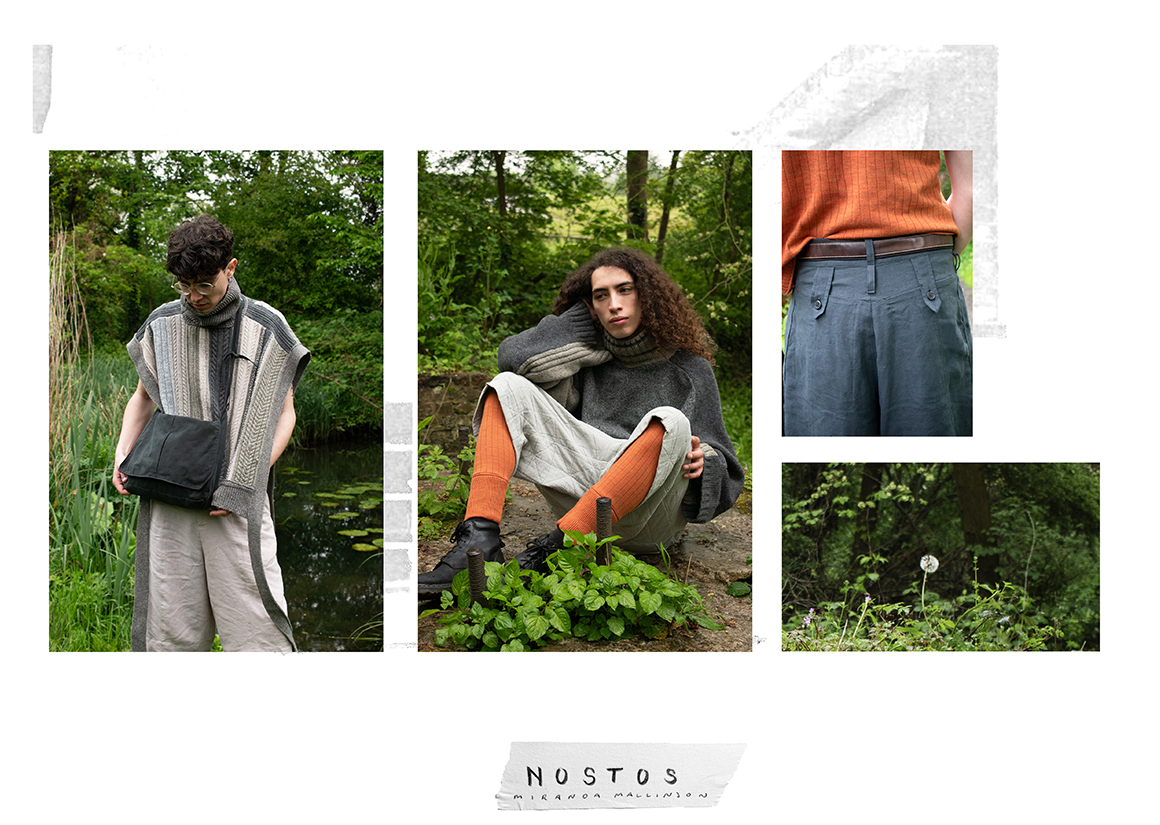
About Me
A final year fashion design student at Kingston University
I'm a menswear and knitwear designer, with a focus on sustainability through repurposing second-hand textiles and garments. My work centres around local communities, using these connections to find both inspiration and materials. In a globalised world there is power in looking close to home, utilising the spaces where we can make the greatest impact.
Striving to work sustainably has pushed me in my technical abilities as well as creatively. My design process incorporates traditional sketching and draping skills with digital pattern cutting and Clo3D modelling, in order to work with freedom but minimise textile waste from design to production.
INSPIRATION
'NOSTOS' - A homecoming or return after a long journey
My homecoming was bittersweet, and I found myself seeking comfort in my home surroundings. To honour and preserve these objects I have repurposed them in my work; using old bed sheets, motheaten jumpers, sofa covers, and torn trousers to create new pieces with purpose and longevity. The feeling of comfort and nostalgia is central to my collection, using fabrics and silhouettes with movement that envelops the body. I enjoy finding ways to work with their imperfections to create something unique.
I referenced objects owned by my family that had stood the test of time, the worn through shirts over 30 years old, the jumpers kept as sentimental memories, and the fabric that transformed from curtains to sofa covers to pillowcases over the years. Tactility became important, using soft worn-in fabrics and heavy knitted textures to replicate the comfort of the home. Materials used in this collection have been sourced from family friends, charity shops, car-boot sales as well as donations.
MY WORK
PORTFOLIOS

DETAIL
Combining crafts
Garments in this collection are an amalgamation of different materials and products, requiring different techniques and skills to manipulate them. By combining using hand knitting, machine knitting, and felting, I could use the same yarns to create textiles with varying structure and textures. The tabard in look 5 was a product of several processes, each strip is knit individually on a domestic knitting machine, then a Latvian braid is hand knit on, before all panels are linked together to create the vertical stripes. It is a garment that can never be reproduced, entirely a product of second-hand jumpers unravelled by hand.
